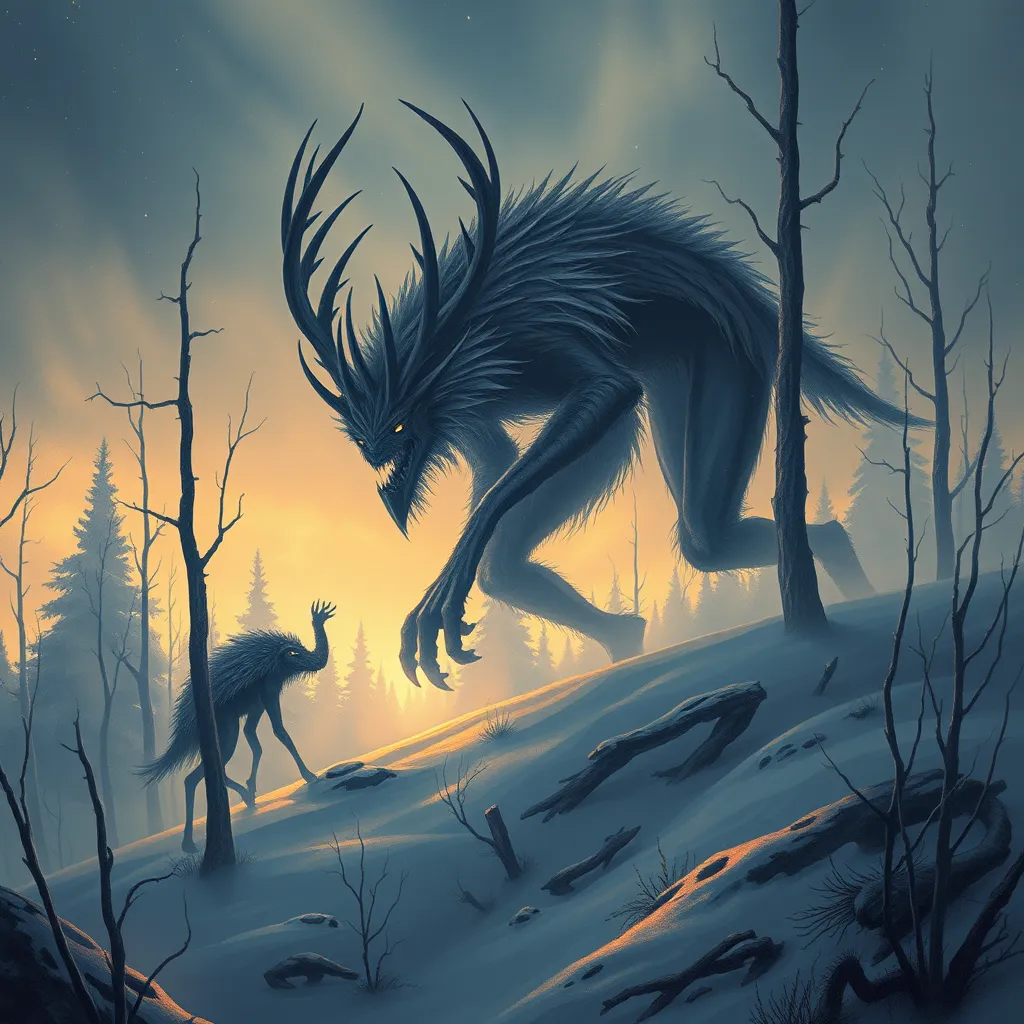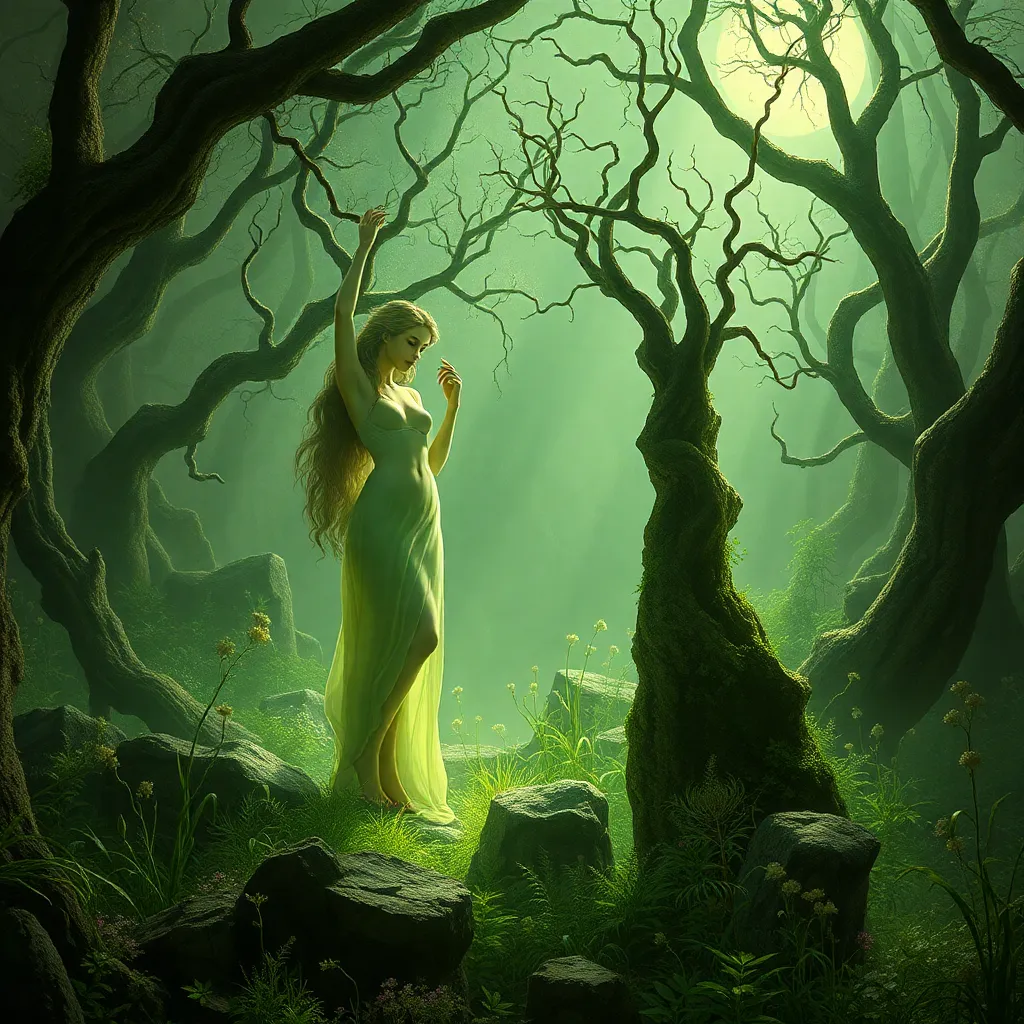The Leprechaun and the Kobold: Exploring Similarities and Differences in Folklore
I. Introduction
The world of folklore is rich with fascinating creatures that have captivated the imagination of people for centuries. Two such mythical beings are the Leprechaun and the Kobold. Originating from Irish and Germanic traditions respectively, these figures possess unique traits and stories that reflect the cultures they hail from.
Studying these mythical creatures helps us understand the values, fears, and beliefs of the societies that created them. This article aims to explore the similarities and differences between Leprechauns and Kobolds, shedding light on their historical origins, characteristics, behaviors, roles in folklore, cultural symbolism, and modern representations.
II. Historical Origins
A. The origins of the Leprechaun in Irish folklore
Leprechauns are deeply rooted in Irish folklore, with their origins tracing back to the early medieval period. Initially, they were considered to be a type of fairy or solitary spirit, often depicted as cobblers or shoemakers. The name “leprechaun” is believed to derive from the Old Irish word “luchorpán,” meaning “small body.”
B. The roots of the Kobold in Germanic mythology
Kobolds have a more complex origin, emerging from various Germanic myths and legends. They were often associated with household spirits, similar to the Roman household gods known as Lares and Penates. The name “Kobold” is thought to come from the Middle High German “kube” (copper) and “hold” (spirit), indicating their connection to mining and domestic spaces.
C. Evolution of these figures over time
Over time, both Leprechauns and Kobolds have evolved significantly. Leprechauns transitioned from being feared spirits to more benevolent tricksters associated with luck and wealth, particularly the pot of gold at the end of the rainbow. Kobolds, on the other hand, have fluctuated between helpful household spirits and mischievous tricksters, adapting to the needs of the narratives in which they appeared.
III. Physical Characteristics
A. Description of Leprechaun appearance
Leprechauns are typically depicted as small, elderly men, often wearing a green coat and hat. They are often portrayed with a white beard, reflecting their ancient and wise nature. Their attire is often adorned with gold buckles, symbolizing their connection to wealth.
B. Description of Kobold appearance
Kobolds have a more varied appearance, often described as small humanoid figures with pointed ears. They can be depicted in various forms, ranging from cute, gnome-like creatures to frightening goblin-like beings. Their clothing is often rustic, made from natural materials, and they may wear a hat or hood.
C. Comparison of physical traits and attire
- Size: Both Leprechauns and Kobolds are small in stature, but Leprechauns are usually portrayed as more human-like.
- Clothing: Leprechauns are distinctly associated with green attire, while Kobolds may wear a variety of colors and styles.
- Facial features: Leprechauns often have beards, whereas Kobolds can be depicted with or without facial hair.
IV. Behavioral Traits
A. Common behaviors associated with Leprechauns
Leprechauns are often viewed as mischievous tricksters. They are known to lead people astray, hiding their pots of gold and playing pranks on unsuspecting humans. Despite their trickery, they are also portrayed as somewhat benevolent, granting wishes to those who manage to catch them.
B. Typical actions and personality of Kobolds
Kobolds are known for their dual nature; they can be helpful or harmful, depending on their mood and the treatment they receive from humans. In homes, they might perform small tasks like cleaning or cooking, but if angered, they can create chaos and mischief.
C. Analysis of behavioral similarities and differences
Both Leprechauns and Kobolds share a trickster theme, but their motivations differ. Leprechauns often seek to protect their treasure, while Kobolds respond to their environment and the behavior of humans. Their interactions with people can reflect deeper themes of respect and reciprocity in human relationships.
V. Roles in Folklore and Mythology
A. The role of the Leprechaun in Irish tales and traditions
Leprechauns play a significant role in Irish folklore, often serving as symbols of luck and prosperity. They are featured in numerous tales, emphasizing the importance of cleverness and wit in overcoming challenges.
B. The significance of Kobolds in German folklore
Kobolds are integral to German folklore, often associated with mining and domestic life. Their presence in stories highlights themes of industriousness and the consequences of neglecting household affairs. They serve as reminders of the unseen forces that influence daily life.
C. Comparing their functions as tricksters and helpers
While both creatures embody the trickster archetype, Leprechauns are more consistently depicted as guardians of wealth, whereas Kobolds oscillate between helpful and harmful roles. This difference illustrates the cultural values surrounding fortune and domesticity in Irish and Germanic societies.
VI. Cultural Symbolism
A. The symbolism of Leprechauns in Irish culture
Leprechauns symbolize luck, wealth, and the spirit of Ireland. They embody the whimsical nature of Irish storytelling and reflect the cultural belief in the importance of cleverness and resourcefulness.
B. The cultural significance of Kobolds in German-speaking regions
Kobolds represent the connection to the earth, labor, and domestic life. They symbolize the importance of industry and the balance between human effort and the unseen influences of the world.
C. How both figures reflect societal values and beliefs
Both Leprechauns and Kobolds serve as cultural symbols that reflect the values of their respective societies. They highlight the importance of respect for nature, the consequences of greed, and the interplay between human beings and the mystical world.
VII. Modern Representations
A. The portrayal of Leprechauns in contemporary media
In modern times, Leprechauns have become emblematic of Irish culture, often depicted in films, advertisements, and St. Patrick’s Day celebrations. They are frequently portrayed as comical figures, reinforcing their status as symbols of luck.
B. The depiction of Kobolds in modern fantasy and gaming
Kobolds have found their way into contemporary fantasy literature and role-playing games, often depicted as small, cunning creatures that serve various roles, from minions to wise sages. Their portrayal varies widely, reflecting the adaptability of folklore in modern storytelling.
C. Impact of popular culture on the perception of these creatures
Popular culture has shaped the perception of both Leprechauns and Kobolds, often simplifying their characteristics for entertainment purposes. This has led to a blending of their traits and a commercialization that sometimes overshadows their rich folkloric history.
VIII. Conclusion
In summary, while Leprechauns and Kobolds share similarities as small, mischievous creatures within folklore, they are distinct in their origins, appearances, behaviors, and cultural significance. Leprechauns symbolize luck and wealth in Irish culture, while Kobolds represent industriousness and the domestic sphere in Germanic traditions.
The enduring legacy of both figures in folklore highlights their relevance in contemporary society. They serve as reminders of the values and beliefs of the cultures from which they originate, while also continuing to evolve within modern storytelling. Whether as symbols of luck or industrious spirits, Leprechauns and Kobolds remain fascinating subjects for exploration in the realm of folklore.



